EV news
Battery power: India’s EV segment surges to nearly 2 million registrations in FY25
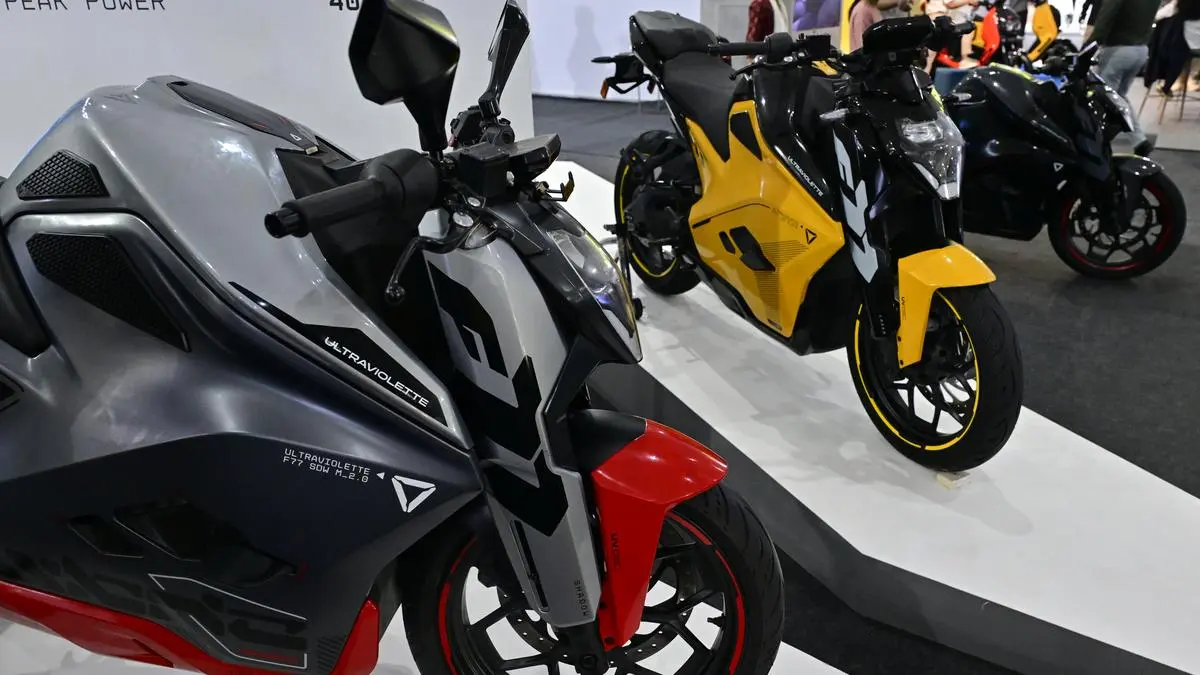
India’s electric vehicle (EV) sector continues to witness a strong upward trajectory, with total EV registrations nearing the two-million mark in the financial year. The growth, spanning across electric two-wheelers, three-wheelers, and passenger vehicles, comes despite initial setbacks following the expiration of government subsidies. This surge signals a robust shift towards sustainable mobility in the country.
As of March 31, total EV registrations stood at 1.95 million units, reflecting a 16% increase compared to the previous year, which saw 1.68 million registrations. Just two years ago, in the financial year before last, only 1.18 million EVs were registered, showcasing the rapid adoption of electric mobility.
The electric two-wheeler (e2W) market played a significant role in this expansion, accounting for 58% of all EV registrations in the financial year. Initially, the segment saw a dip in sales due to the withdrawal of government subsidies under the FAME scheme. However, it rebounded quickly, driven by growing consumer confidence, an influx of new high-performance models, and aggressive expansion strategies by leading manufacturers.
Total e2W registrations for the year reached 1.14 million units, up from 0.95 million in the previous year. Analysts attribute this resurgence to the affordability and sustainability of electric two-wheelers, along with increased awareness among consumers. More brands have also entered the market, further fueling demand.
Ola Electric maintained its position as the top seller in the e2W segment despite experiencing some pressure on sales towards the latter half of the year. The company recorded 3.43 lakh unit registrations, slightly ahead of the 3.3 lakh units sold the year before. TVS Motors secured second place with 2.34 lakh units, a significant increase from 1.83 lakh units. Bajaj Auto climbed to the third spot, selling 2.26 lakh units, up from 1.07 lakh units previously. Ather Energy followed closely, with registrations rising to 1.3 lakh units from 1.09 lakh units. Hero MotoCorp saw an uptick as well, selling over 47,200 e2Ws compared to just 17,720 the previous year.
Meanwhile, Greaves, which includes the Ampere brand, witnessed a decline, selling approximately 40,500 units, down from 55,048 units. Wardwizard Innovations & Mobility, another listed EV manufacturer, registered sales of about 9,400 units, slightly up from 9,120 units. Overall, the e2W segment was served by over 500 players, highlighting the increasing competition in the market.
The electric three-wheeler (e3W) segment also showed steady growth, with a 10% rise in registrations. A total of 6.97 lakh e3Ws were registered during the year, compared to 6.33 lakh units in the previous year. This growth was primarily driven by new product launches and network expansion by key manufacturers.
Among e3W manufacturers, Mahindra Last Mobility retained its leadership position, selling over 68,650 units, up from 60,618 units. Bajaj Auto saw an exceptional surge in sales, recording more than 50,500 units—nearly five times its previous figure of 10,890 units. YC Electric registered over 44,500 units, while Piaggio recorded 18,400 registrations, although slightly lower than its previous 24,917 units. Omega Seiki and TI Clean Mobility both crossed the 6,000-unit mark, increasing their market presence.
Electric passenger vehicles (ePVs), which include electric cars and SUVs, also experienced healthy growth. The total number of registrations reached 1.06 lakh units, up from 0.91 lakh units in the previous year. This increase was fueled by the entry of new players into the market and expansion efforts by existing manufacturers.
Tata Motors continued to dominate the ePV segment with 56,600 registrations, maintaining its market stronghold. JSW MG Motor made an impressive leap, nearly tripling its sales to around 30,000 units from just 11,680 the previous year. Mahindra & Mahindra followed with approximately 6,500 units, slightly up from 6,115 units.
Market analysts predict that electric cars will continue to gain traction, with manufacturers focusing on affordability, range improvements, and better charging infrastructure. However, compared to two-wheelers, the adoption of electric cars remains relatively gradual. At present, fleet operators and shared mobility services are the primary drivers of ePV growth.
The overall EV market saw notable fluctuations in monthly sales. In March alone, total EV registrations stood at 1.87 lakh units, a slight dip from the 2.13 lakh units recorded in the same month of the previous year, which had been driven by pre-buying before the subsidy revisions. In February, total registrations reached 1.4 lakh units.
Despite periodic ups and downs, India’s EV sector is well on its way to sustained growth. With increasing awareness, expanding charging infrastructure, and continuous innovation by manufacturers, the transition to electric mobility is expected to gain further momentum in the coming years.
Article By
Sourabh Gupta
Blog
MG’s Cyberster: India’s Upcoming Premium Electric SUV Set to Launch in July 2025
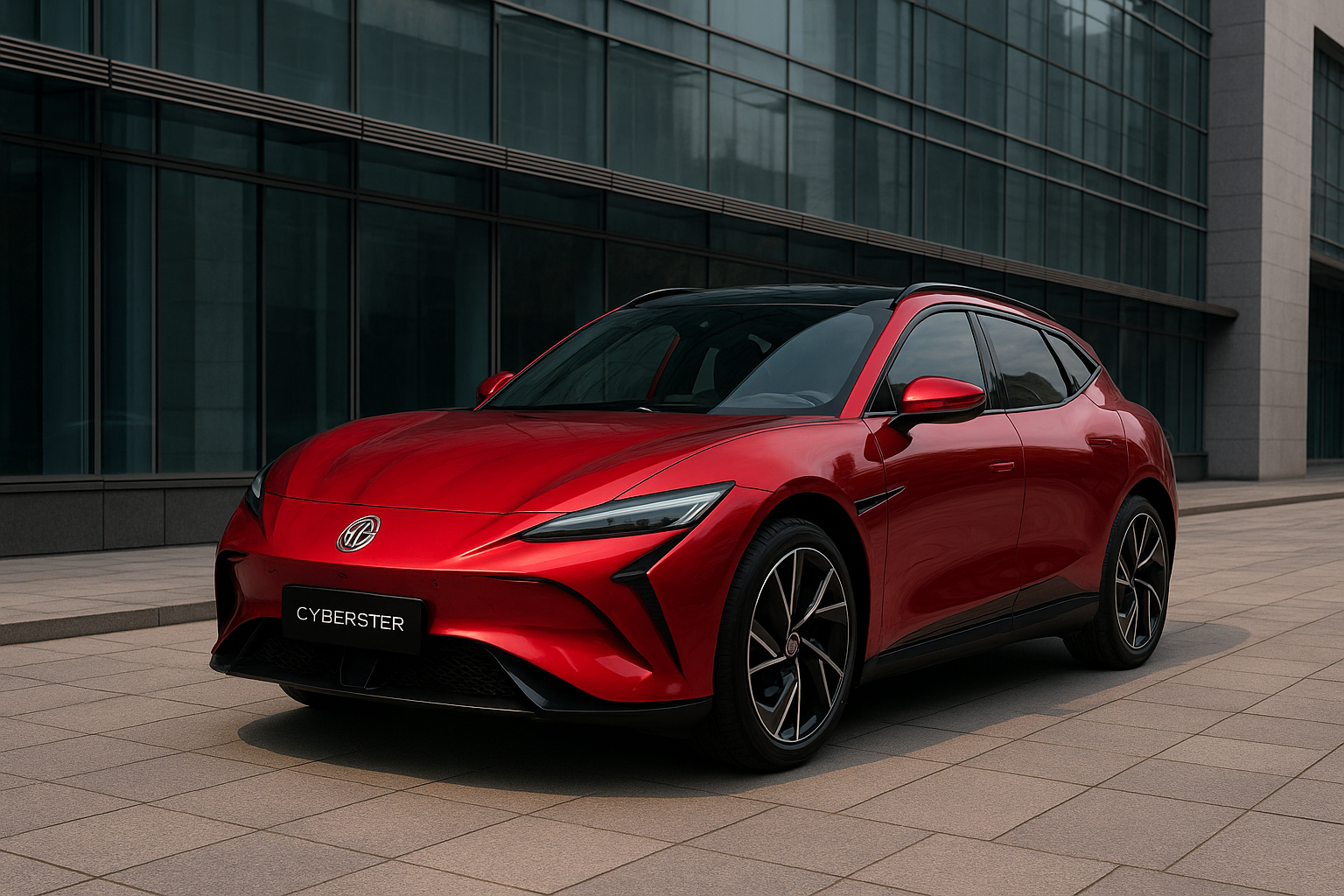
A Bold Step Into India’s Luxury EV Market
So, MG is about to bring out something pretty cool — the Cyberster, a premium electric SUV, expected to launch around July 2025. It’s their way of stepping up in India’s electric vehicle game and offering something that’s not just green, but also stylish and packed with tech.
EVs are getting popular here, and MG wants to be part of that wave, especially for folks who want a good-looking, comfy ride that’s loaded with modern features.
Striking Design Meets Cutting-Edge Technology
We don’t have all the info yet, but the Cyberster looks sharp. Think sleek and sporty, something that’ll catch eyes on the road.
Inside, expect lots of screens, smart features, and safety tech — basically, everything you’d want to make your drive smooth and fun. Whether it’s a quick city run or a weekend escape, this car’s aiming to make every trip enjoyable.
Performance That Packs a Punch
If you’re paying for a premium electric SUV, you want it to perform, right? While details are still under wraps, MG usually doesn’t disappoint. Expect a good driving range and enough power to make driving fun.
And with fast charging, you won’t be stuck waiting around forever — a big plus for busy folks.
What the Cyberster Means for Indian Consumers
This car means more choice for buyers who want a premium EV. The market is heating up, and it’s great because it gives you options that fit your style and budget.
MG is known for giving good value, so this might be a premium ride without the crazy premium price tag.
Growing Competition: A Win for Buyers
More companies entering the EV space means the competition’s getting fierce — Tata, Mahindra, Hyundai, and now MG all want your attention.
That means better cars, better prices, and more charging stations popping up, making EVs easier to own.
MG’s Vision for India’s EV Future
The Cyberster is just the start for MG. They’re clearly aiming to be a big player in India’s EV scene by giving buyers stylish, tech-packed cars.
As India moves toward greener transport, cars like this will help make electric vehicles the new normal.
Article By
Sourabh Gupta
Blog
India’s EV Market Heats: More Players, More Competition
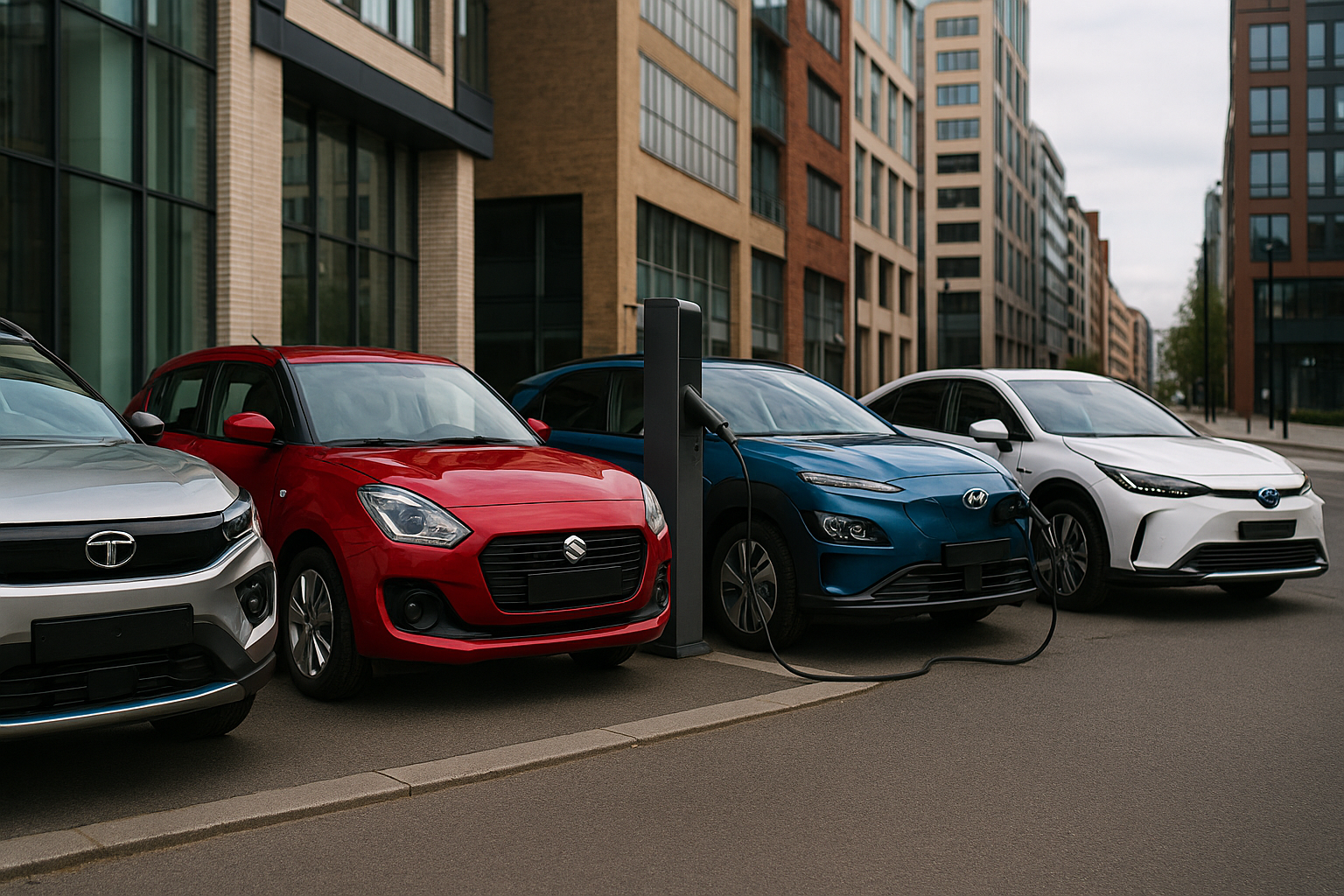
The Electric Vehicle Battle Is Just Getting Started
You know how things are changing fast with electric vehicles here in India? Well, it’s no longer just a couple of companies in the game. Tata and Mahindra have been leading for a while, but now Maruti, Toyota, and Hyundai are jumping in too. It’s turning into a proper race, and that’s great news for anyone thinking about buying an EV.
More players mean more choices, and when companies compete, it usually means better deals and cooler cars for us.
New Entrants Bring Fresh Energy
Maruti Suzuki is like the go-to brand for most Indian families because their cars are affordable and reliable. Now, if they start selling EVs, it’s going to make electric vehicles a lot more reachable for everyday folks.
Then you have Toyota and Hyundai, which have been working on electric cars globally for years. They’re bringing that know-how to India, which means better technology and cars designed to handle our roads and conditions.
This fresh blood is going to push everyone to do better, which is a win for all of us.
What This Means for Consumers
For buyers, this is the best time to consider an EV. You’ll get a wider choice of vehicles — from simple and affordable models to fancy ones packed with features.
Also, with so many companies competing, expect better batteries that last longer, faster charging times, and prices that won’t scare you away.
Charging stations will become more common, making it easier to own and use an EV without stress.
Challenges for Established Players
Tata and Mahindra have done well so far, but now the heat’s on. They’ll need to keep improving their cars and customer service to stay ahead.
More competition means prices might get friendlier, and cars will keep getting better, which is good news for everyone.
The Road Ahead: A Win for India’s Green Future
All this competition will speed up EV adoption, which means cleaner air and less pollution.
With more companies investing in EVs, we’ll see more charging points, better batteries, and more jobs related to green technology.
The future looks electric, and it’s shaping up to be an exciting ride.
Article By
Sourabh Gupta
Blog
Tata Motors Sets Sights on Dominating 50% of India’s EV Market
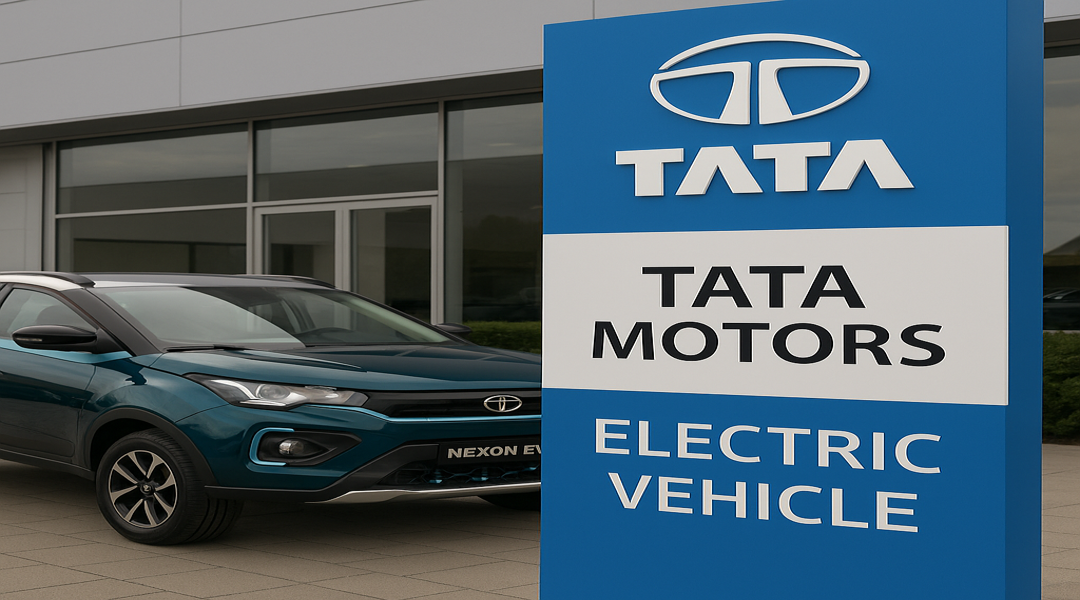
A Bold Ambition in a Growing Industry
Tata Motors isn’t just aiming to be in the EV race — they want to lead it. A recent ET Auto report says Tata wants to grab half of India’s electric vehicle market, which is a pretty big deal.
India’s EV scene is growing fast. More people are thinking about electric cars because petrol prices keep climbing, and folks want cleaner air. With all this happening, Tata’s shooting for the top spot, wanting to hold a massive share of the market.
Where Tata Motors Stands Today
Right now, Tata is the go-to name when it comes to EVs in India. The Nexon EV is one of the best-selling electric SUVs in the country. They’ve also got other models like the Tiago EV and Tigor EV that cover different budgets and needs.
But Tata knows it can’t just sit back and relax. Other brands like Mahindra, MG, and Hyundai are also pushing hard. Tata’s got to keep coming up with new stuff and get better if they want to stay ahead.
How Tata Plans to Achieve Its 50% Goal
So, how do they plan to take over half the market? They’ve got a few things lined up:
Expanding Its EV Lineup
Tata’s working on some cool new electric cars like the Harrier EV, Curvv EV, and the fancy Avinya. These options will give customers more choices, whether they prefer something small and practical or large and luxurious.
Building More Charging Stations
One of the biggest worries about EVs is charging. Tata’s working with Tata Power to set up more chargers across cities and towns. The easier it is to charge, the more people will want to buy EVs.
Making Batteries in India
Batteries are the priciest part of EVs, and importing them adds to the cost. Tata wants to make batteries right here in India, which should help bring prices down.
Going After Fleets and Government Buyers
Tata’s not just focusing on people buying cars for themselves. They’re also selling EVs to taxis, delivery companies, and government fleets. That’s a smart move because these buyers buy in bulk.
Challenges Ahead
It won’t be a smooth ride, though. Tata still has some bumps to cross:
- Battery supply might not always keep up with demand.
- Other companies are catching up fast.
- Not all towns have enough charging points yet.
- Convincing people outside cities to switch to EVs takes time.
The Road Ahead
Tata wants to own half of India’s EV market, and while that’s a huge goal, they have the right plan and the brand to pull it off. For buyers, this means better cars and more choices soon. For India, it’s a cleaner, greener future.
Article By
Sourabh Gupta
-

 Blog6 months ago
Blog6 months agoIndia’s Electric Vehicle Market Forecast to 2028 A Rapidly Growing Industry
-

 Blog12 months ago
Blog12 months agoTop 10 Electric Vehicles of 2024: A Comprehensive Guide
-

 Blog1 year ago
Blog1 year agoImpact of Electric Vehicles on the Environment and Pollution
-

 Blog1 year ago
Blog1 year agoTop 5 best electric vehicles Under $30,000: Affordable Choices for 2024
-

 EV news6 months ago
EV news6 months ago2025 Might Be the Time of EVs in India, Drove by SUV Dispatches
-

 EV news9 months ago
EV news9 months agoOla Electric Offers Massive Festive Discounts on Scooters Starting at ₹50,000
-

 Blog6 months ago
Blog6 months agoMahindra BE 6 An Intense Move toward the Fate of Electric Versatility
-
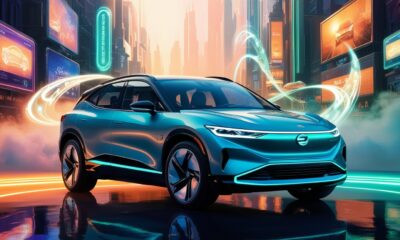
 Blog1 year ago
Blog1 year agoEV Charging Technology: Leading the Electric Vehicle Innovations in 2024




